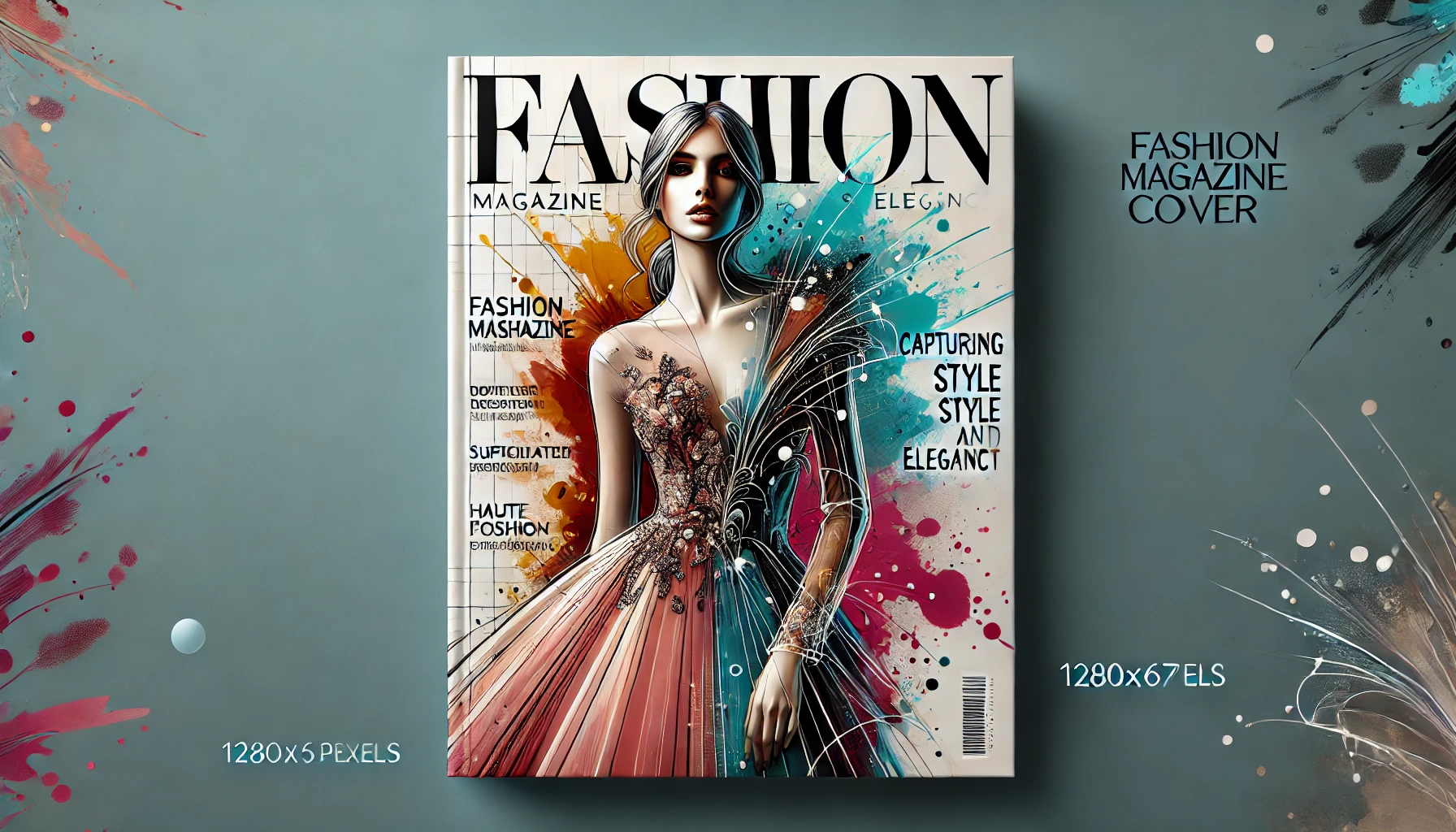Introduction
Fashion magazine covers are not merely gateways to the pages within but are potent cultural symbols that encapsulate the zeitgeist of fashion at any given moment. They serve as the face of the fashion industry, dictating trends and often shaping public opinion about style, beauty, and glamour. The evolution of these covers from simple product showcases to complex representations of fashion narratives reflects their significance in the industry and popular culture. Iconic covers, such as Jean Shrimpton’s 1965 Vogue shoot in New York City, have left indelible marks on the fabric of fashion history, influencing generations of style enthusiasts and professionals alike.
Understanding the Elements of a Fashion Magazine Cover
Visual Composition
The visual appeal of a fashion magazine cover is paramount in attracting the reader’s attention. It is a carefully orchestrated interplay of images, colors, and text. The cover image—whether it features high-profile celebrities, models, or striking artistic shoots—sets the tone. Designers employ color schemes that complement the season’s mood or the featured attire, utilizing contrasts that make the cover stand out on crowded newsstands. Typography also plays a critical role; the choice of fonts and their arrangement can enhance the cover’s visual impact, guiding the reader’s eye to key elements like headlines or special features.
Branding and Identity
Every fashion magazine has a unique identity, often reflected through its cover design. Vogue’s covers are synonymous with high fashion and exclusivity, usually featuring haute couture and avant-garde styles. In contrast, a magazine like Cosmopolitan might focus more on accessibility and street fashion trends. This branding extends to the magazine’s choice of cover stars, editorial tone, and layout design, all aligning with the publication’s target audience. For instance, Elle magazine covers often project a youthful, vibrant aesthetic that appeals to a demographic interested in high fashion and accessible street styles.
The Creative Process Behind a Cover Shoot
Planning and Conceptualization
Creating a fashion magazine cover starts long before the camera snaps the first shot. It begins with a conceptualization phase where the editorial team decides on themes that resonate with current fashion trends or upcoming cultural events. This might involve mood boards, sketches, and deep discussions on visual narratives. The selection of the right photographer and cover star, who aligns with the magazine’s brand and the issue’s theme, is crucial. Renowned photographers bring their distinctive styles, which can significantly influence the shoot’s direction and outcome.
Execution
The execution of a cover shoot is a meticulous process that involves coordination among various creatives, including stylists, makeup artists, and set designers. On the day of the shoot, everything must converge seamlessly to translate the conceptual vision into a tangible product. Lighting is critical in setting the mood, while styling ensures that the fashion pieces are presented most appealingly. Despite thorough planning, challenges such as unfavorable weather, equipment issues, or unanticipated model availability can arise, requiring quick thinking and flexibility from the entire team.
The Business of Fashion Covers
Marketing and Sales Impact
The cover of a fashion magazine plays a significant role in its marketing and sales strategies. An attractive cover can significantly boost newsstand sales and subscriptions. Publishers often use exclusive celebrity interviews or groundbreaking fashion spreads to entice readers. The presence of a celebrity or a world-renowned fashion icon can elevate the perceived value of the magazine, drawing in a broader audience and increasing sales.
Digital Evolution
In the digital age, the role of the magazine cover has evolved to meet the needs of an online audience. While traditional print covers remain important, digital covers have become a crucial platform for innovation and creativity. These digital versions often feature interactive elements such as video covers or animated graphics, enhancing user engagement and extending the magazine’s reach across global digital platforms. Social media also plays a vital role in the dissemination and impact of magazine covers, with viral covers achieving significant digital footprints that enhance brand visibility and influence.
Conclusion
Fashion magazine covers continue to be pivotal in defining and disseminating the trends and aesthetics of the fashion world. They encapsulate moments of artistic creativity, business acumen, and cultural relevance, all woven into the fabric of visual storytelling. As the fashion industry evolves, so will its covers, adapting to new technologies and shifting cultural landscapes but always striving to capture the essence of style and elegance.
FAQs
- What makes a fashion magazine cover iconic?
- How do fashion magazines decide who gets on the cover?
- What has been the impact of digital media on fashion magazine covers?
- How often do fashion magazine covers cause controversy, and why?
- What are some of the most memorable fashion magazine covers of all time?
- How can upcoming photographers get a chance to shoot a fashion magazine cover?
- What role do fashion editors play in the creation of a magazine cover?
- How has the representation of diversity changed in fashion magazine covers over the years?
